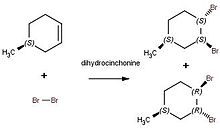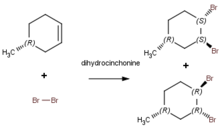Methylcyclohexene

| |
| Names | |
|---|---|
| IUPAC name
1-Methylcyclohexene,3-Methylcyclohexene, 4-Methylcyclohexene
| |
| Systematic IUPAC name
1-Methylcyclohexene,3-Methylcyclohexene, 4-Methylcyclohexene | |
| Other names
2,3,4,5-Tetrahydrotoluene or 1-Methyl-1-Cyclohexene (1-Methylcyclohexene), 1,2,3,6-Tetrahydrotoluene (4-Methylcyclohexene)
| |
| Identifiers | |
3D model (JSmol)
|
|
| 1304483 (1-methylcyclohexene), 1848550 (3-methylcyclohexene), 1901299 (4-methylcyclohexene) | |
| ChemSpider | |
| EC Number |
|
PubChem CID
|
|
| UNII |
|
| UN number | 3295 |
CompTox Dashboard (EPA)
|
|
| |
| |
| Properties | |
| C7H12 | |
| Molar mass | 96.170 g/mol for 1-methylcyclohexene |
| Appearance | clear, liquid, colorless for 1-methylcyclohexene |
| Density | 0.811 g/mL at 20°C for 1-methylcyclohexene, 0.805 g/mL for 3-methylcyclohexene, 0.799 g/mL for 4-methylcyclohexene |
| Melting point | -120.4°C for 1-methylcyclohexene at 1 atm, -124°C for 3-methylcyclohexene, -115.5°C 4-methylcyclohexene |
| Boiling point | 110°C for 1-methylcyclohexene at 1 atm, 104°C for 3-methylcyclohexene, 103°C 4-methylcyclohexene |
| 0.052 g/kg for 1-methylcyclohexene | |
Refractive index (nD)
|
1.44 for 1-methylcyclohexene |
| Hazards | |
| GHS labelling: | |
  
| |
Signal word
|
Warning |
| H225, H304, H315, H319, H335 | |
| P210, P233, P240, P241, P242, P243, P261, P264, P271, P280, P301+P310, P302+P352, P303+P361+P353, P304+P340, P305+P351+P338, P312, P321, P331, P332+P313, P337+P313, P362, P370+P378, P403+P233, P403+P235, P405, P501 | |
| Flash point | -3°C |
| Safety data sheet (SDS) | MSDS (1-methylcyclohexene) |
Except where otherwise noted, data are given for materials in their standard state (at 25 °C [77 °F], 100 kPa). | |
| Infobox references | |
Methylcyclohexene is an organic compound. It consists of cyclohexene with a methyl group substituent. It is generally used as a reagent or intermediate to derive other organic compounds.[1] Methylcyclohexene is mostly seen in reactions involved with producing other compounds. Methylcyclohexene is also a cyclic olefin. Cyclic olefins can come together to form polymers. These polymers are thermoplastics that are advantageous due to their low moisture intake, their ability to resist high temperatures, have low bireinfringence, and excellent transparency. This type of polymer material is very useful in medical instruments, packaging, fibers, and optics.
Synthesis[]

A molecule with this simplicity can be bought from different biochemical manufacturers. There are different ways to produce methylcyclohexene. One way is to react cyclohexanone with an irreversible nucleophile, Grignard reagent, to form 1,2 addition product, 1-methylcyclohexanol. Heating 1-methylcyclohexanol in the presence of an acid or a base will carry out a dehydration reaction to from methylcyclohexene (major) and methylenecyclohexane (minor). Methylcyclohexene is dominant because of the more stable trisubstituted alkene. Although it is not preferred due to the high activation energy requirement, synthesis of 1-methylcyclohexene can also be done by Diels–Alder reaction .
As a by-product of hydrogenation of toluene to methylcyclohexane over ruthenium catalyst, methylcyclohexene can poison the catalyst if the catalyst is insufficiently activated. Catalysts that have not been sufficiently hydrogenated prior to introduction of toluene will experience poisoning of active sites by methylcyclohexene, as the double bond adsorbs strongly to the catalyst surface.[2]
Structure and bonding[]

The isomers of methylcyclohexene each contain a six carbon ring structure, with one carbon-carbon double bond within the ring and one methyl substituent on the ring.[3]The bond lengths of 1-methylcyclohexene are approximately 1.33 Å between C1 (the carbon in the ring with the methyl substituent and C2 (the second carbon of the double bond), 1.51 Å between C2 and C3 (the next carbon around the ring) and between C6 and C1, 1.54 Å between C3 and C4, between C4 and C5, and between C5 and C6, and 1.50 Å between C1 and the carbon of the methyl substituent. The bond lengths of the other isomers of methylcyclohexene vary slightly from 1-methylcyclohexene, due to the different position of the double bond with respect to the methyl substituent.
Reactions[]
Ozonolysis[]
As an unsaturated molecule, methylcyclohexene can undergo oxidation with several oxidizing agents, including the strong oxidizing agent ozone. Methylcyclohexene is an atmospheric pollutant that reacts with ozone, undergoing ozonolysis to release either atomic oxygen or a hydroxyl radical. It contributes to ozone depletion by trapping the oxygen atoms into its end products as carbonyl compounds.[4]
Hydrosilyation[]

[5]Hydrosilylation of cyclohexene can be regioselctive and stereoselective by the number of chlorine atoms in chloro(methyl)silane. Hydrosilyation reaction of 1-methylcyclohexene with monochlorodimethylsaline produces a mixture of seven different products including cis and trans isomers of 2-, 3-, 4-chlorodimethyl(methylcyclohexyl)silanes and chlorodimethyl(cyclohexylmethyl)silane. This is due to the migration of the double bond in the cyclohexene ring. When 1-methylcyclohexene reacts with dichloromethylsaline, it produces more regioselective and stereoselctive products which are dichlorocyclohexylmethylmethylsilane and cis- and trans-dichloro-2-methylcyclohexylmethylsilanes (only 3 of 7 monochlorodimethylsaline products). Similarly, hydrosilyation reaction of 1-methylcyclohexene with trichloromethylsaline will give only one possible product, trichlorocyclohexylmethylsilane with the 60 percent yield. All these products can be further reacted with Grignard reagents, such as ethynylmagnesium bromide to synthesize ethynyl derivatives.
Oxidation with Cytochrome P450[]
1-methylcyclohexene can be oxidized with a Cytochrome P450 catalyst. The oxidation product ratio of hydroxylation products to epoxidation products was shown to be 2:1.[6]
Bromination[]


In the presence of a Cinchona alkaloid, bromination of an alkene leads to optically active dibromides. For 4-methylcyclohexene, there are two possible starting conformations for the compound: the (R) configuration and the (S) configuration. The (S) configuration leads to two different products: a compound which has added the bromines across the double bond at the axial positions, giving the orientation (1S:3R:4R), and a compound which has added the bromines across the double bond at the equatorial positions, giving the orientation (1S:3S:4S). The (R) configuration also produces two different compounds in which the bromines are added across the double bond, producing slightly different configurations. In one compound the bromines are added to the axial positions, but the compound configuration is (1R:3S:4S). In another compound, the bromines are added to the equatorial positions, but the configuration is (1R:3R:4R).
References[]
- ^ Khanarian, G.; Celanese, H. (2001). "Optical Properties of Cyclic Olefin Copolymers". Optical Engineering. 40 (6): 1024. Bibcode:2001OptEn..40.1024K. doi:10.1117/1.1369411.
- ^ Belohlav, H.; Kluson, P.; Cerveny, L. (1997). "Partial Hydrogenation of Toluene Over A Ruthenium Catalyst, A Model Treatment of A Deactivation Process". Res. Chem. Intermed. 32 (2): 161–168. doi:10.1163/156856797X00312. S2CID 95532469.
- ^ Handbook of Chemistry & Physics Online Section 4.
- ^ Atkinson, Roger; Tuazon, Ernesto C.; Aschmann, Sara M. (1995). "Products". Environ. Sci. Technol. (29). doi:10.1029/98JD00524.
- ^ Voronkov, M.; et al. (December 2004). "Hydrosilylation of Cyclohexene, 1-Methylcyclohexene, and Isopropylidenecyclohexane". Russian Journal of General Chemistry. 74 (12): 1895–1899. doi:10.1007/s11176-005-0114-4. S2CID 98097289.
- ^ Khan, M. M. T.; Rao, A. P.; Bhatt, S. D.; Merchant, R. R. (1990). "Epoxidation of cyclohexene, methylcyclohexene and cis-cyclooctene by molecular oxygen using ruthenium(III) aquo ion as catalyst: A kinetic study". Journal of Molecular Catalysis. 62 (3): 265–276. doi:10.1016/0304-5102(90)85222-4.
- ^ Bellucci, G.; Giordano, C.; Marsili, A.; Berti, G. (1969). "Asymmetric Bromination of 4-Methylcyclohexene in the Presence of Dihydrocinchonine". Tetrahedron. 25 (18): 4515–4522. doi:10.1016/S0040-4020(01)82993-8.
- Cyclohexenes